From 8th to 12th May, our Institute organized another edition of ”The Wrocław Workshop of Geology”, this time in Western Pomerania and Gdańsk. This workshop was financed within the framework of the project Integrated Development Program of the University of Wrocław 2018–2022, co-financed by the European Union under the European Social Fund (Priority III, Measure 3.5 Comprehensive programs of higher education institutions, Operational Program Knowledge and Development).
The first day of classes was dedicated to a thematic field trip titled “Geological Structure of the Pomeranian Ridge,” led by Prof. Bernard Cedro from the University of Szczecin, who is a graduate of our Faculty of Geology and a former President of our Student Scientific Circle of Geologists. During the field exercises, we observed exposures of Mesozoic rocks of the Pomeranian Ridge, including Jurassic limestones and glauconitic horizons in Kłęby and Czarnogłowy. These are the northernmost autochthonous rock outcrops of non-Cenozoic rocks in Poland! Our students found numerous fossils of brachiopods, mollusks, gastropods, and more on the mining spoil heaps. Then, thanks to the hospitality of the Faculty of Physical, Mathematical and Natural Sciences staff, we were able to visit the Geocenter in Szczecin along with the Geological Museum of the University of Szczecin, where we saw an impressive collection of rocks showcasing the rich geological history of Western Pomerania, including the collection of so-called ‘Szczecin balls,’ which seemed to generate the greatest interest among our students. The museum tour was conducted by its Director, Dr. Robert Woziński, to whom we extend our warm thanks for his hospitality.
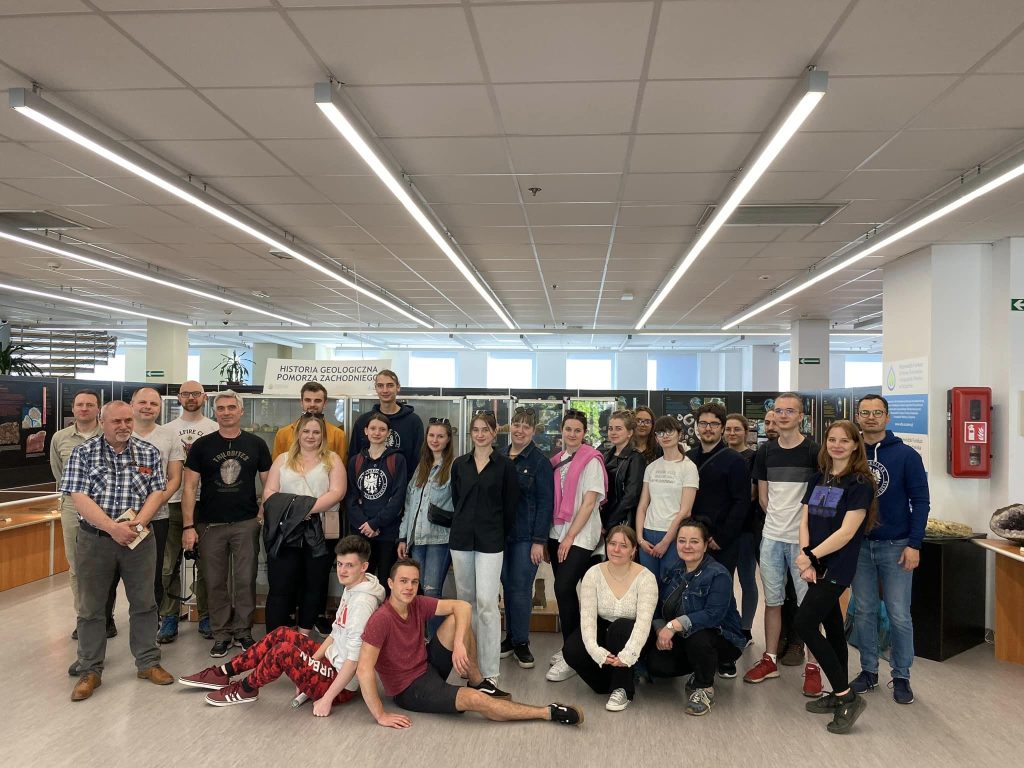
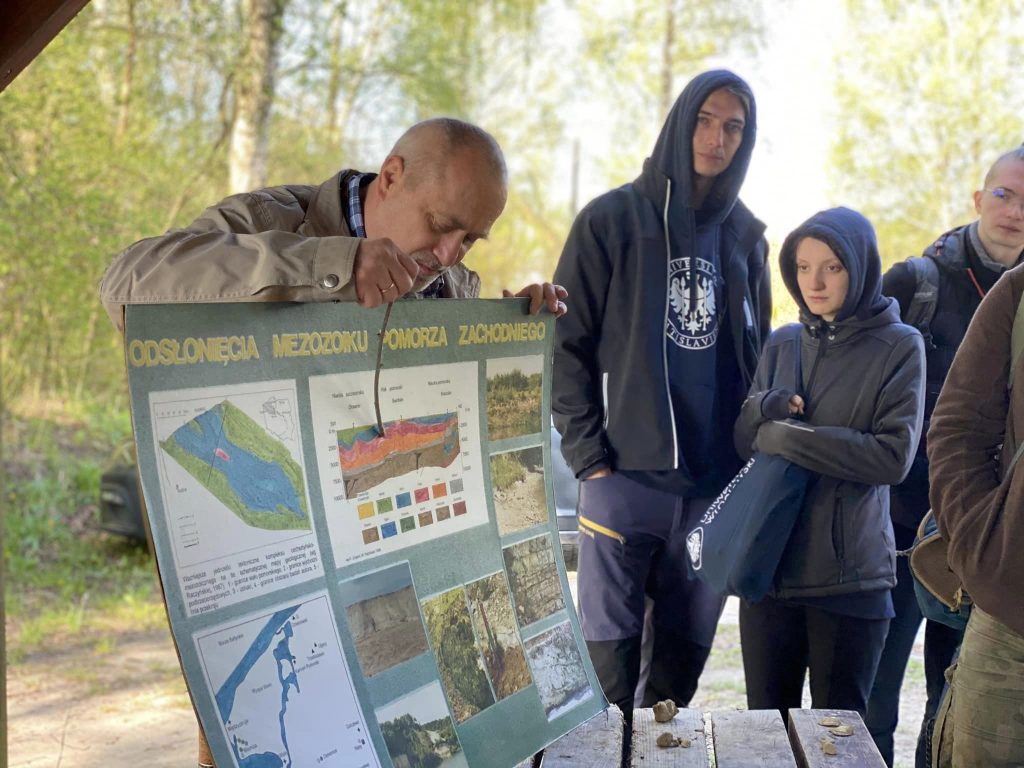
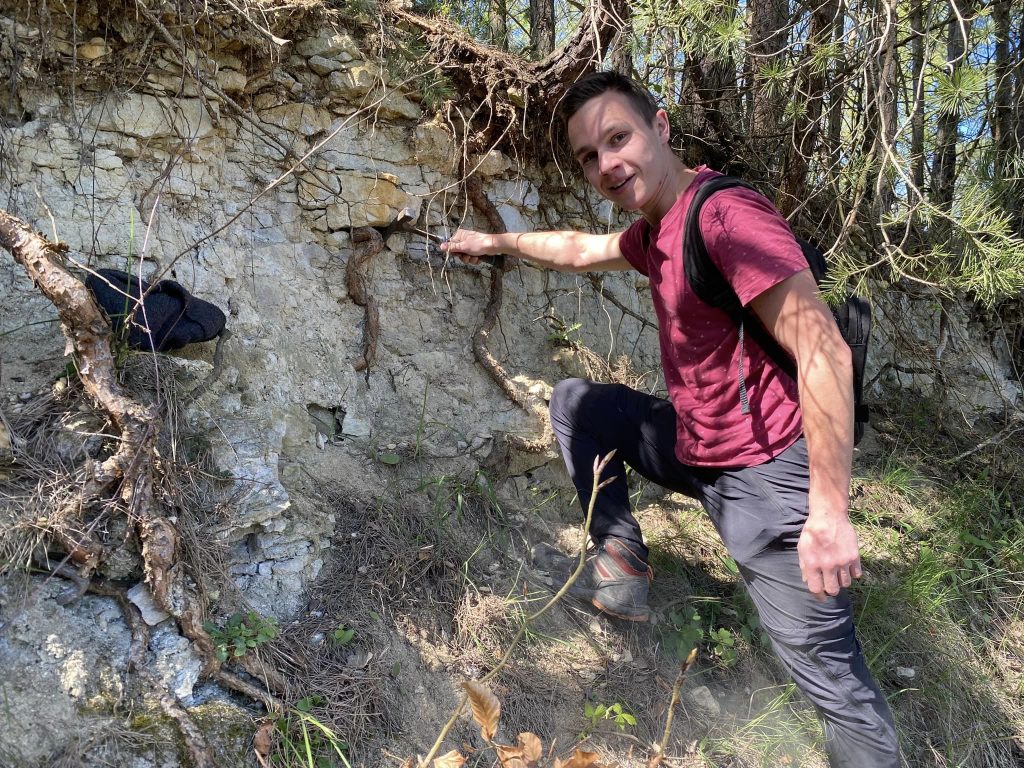
The second day included activities in the Połczyn Zdrójspa, where we focused on the topics of therapeutic waters and peat. Following the Roman principle of ‘salus per aquam,’ these geological materials are widely used in spas for medicinal treatments. After a tour of the Połczyn Zdrój spa and its geological features, we were guided by the spa geologist Michał Kamiński, a graduate of our Wrocław Geology program, and Krzysztof Kalitka, who is the head of operations at the local mining facilities. Our first destination was the Połczyn peat mine, also known as Bronowo, situated in a beautifully varied post-glacial landscape. In the mine, we observed an interesting method of extracting peat using a device that ‘punches’ successive fragments, and our students collected samples of the peat layer using research samplers. The picturesque post-glacial landscape became the inspiration for a lecture by Dr. Artur Sobczyk, who reminded our students of the key elements of a geomorphologically transformed terrain caused by glacial activity. We were thus reminded of eskers, kames, sandurs, and urstromtals. Next, we visited the main spa building, where we witnessed the processing of peat and its application in therapeutic treatments. Our final destination was the IG-1 therapeutic water well, from which Połczyn saline water is drawn for inhalation and bathing treatments. The water is extracted from a Triassic layer at a depth of about 1,200 meters and contains a significant amount of iodine. The more adventurous among us even dared to taste the highly mineralized water, which is diluted before being applied to the patients.

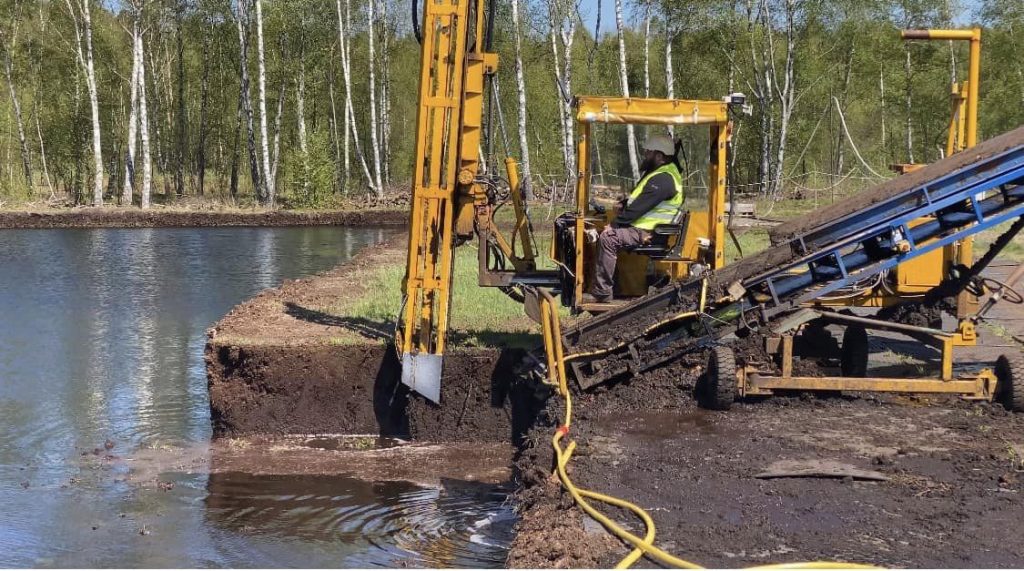
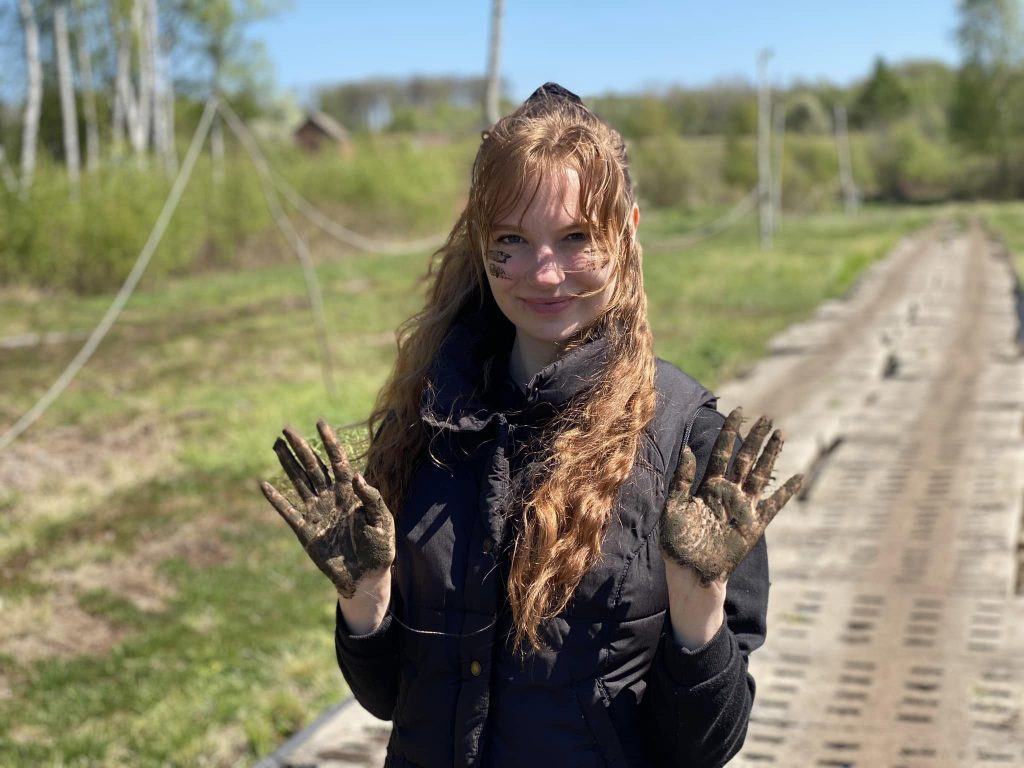
The third day of field exercises took place in Gdańsk, where, with the hospitality of the Marine Geology Department of the Polish Geological Institute National Research Institute, we had the opportunity to attend lectures on topics related to geological research at sea. Lectures on the evolution of the Baltic Sea, amber deposit geology, and geological tasks in marine and coastal areas were presented by Dr. Regina Kramarska, a graduate of our Wrocław Geology program and the longtime Director of the Department, and Dr. Wojciech Jegliński, who currently leads the Gdańsk branch of Polish Geological Institute National Research Institute. Following this, we visited the Gdańsk Refinery, owned by PKN Orlen and Saudi Aramco, where we observed the process of refining crude oil into fuels for vehicles and more. The last item on the agenda was a visit to the Museum of Amber, where we saw the world’s largest specimens of amber and a beautiful collection of specimens containing insect inclusions, and even a gecko!
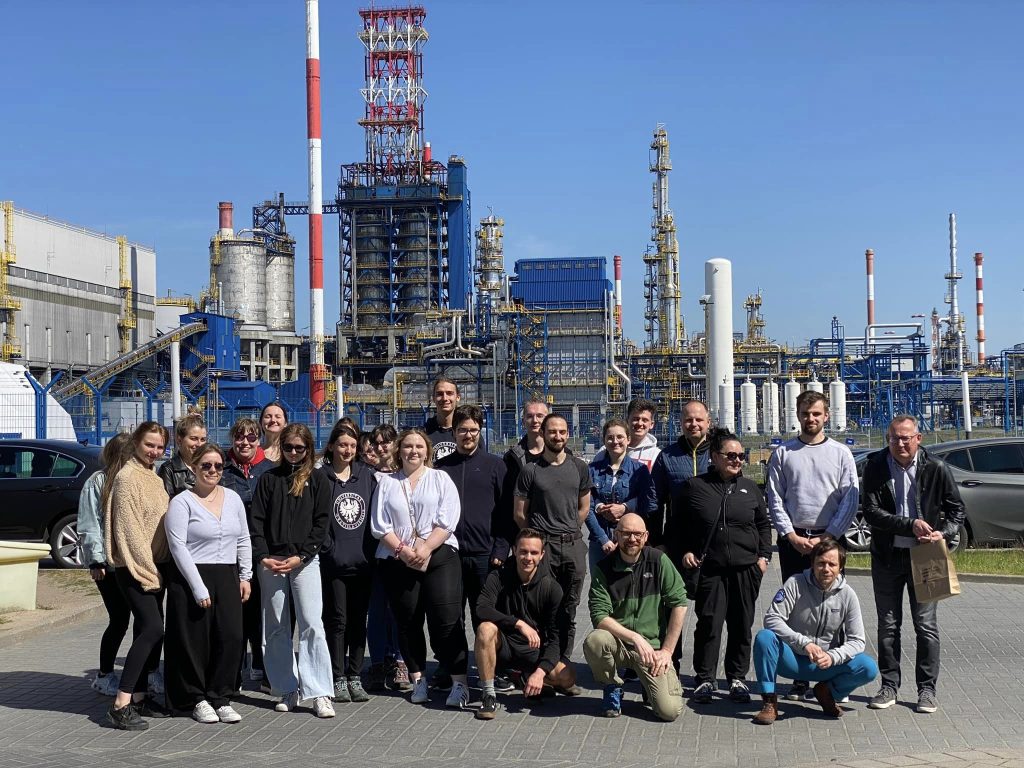
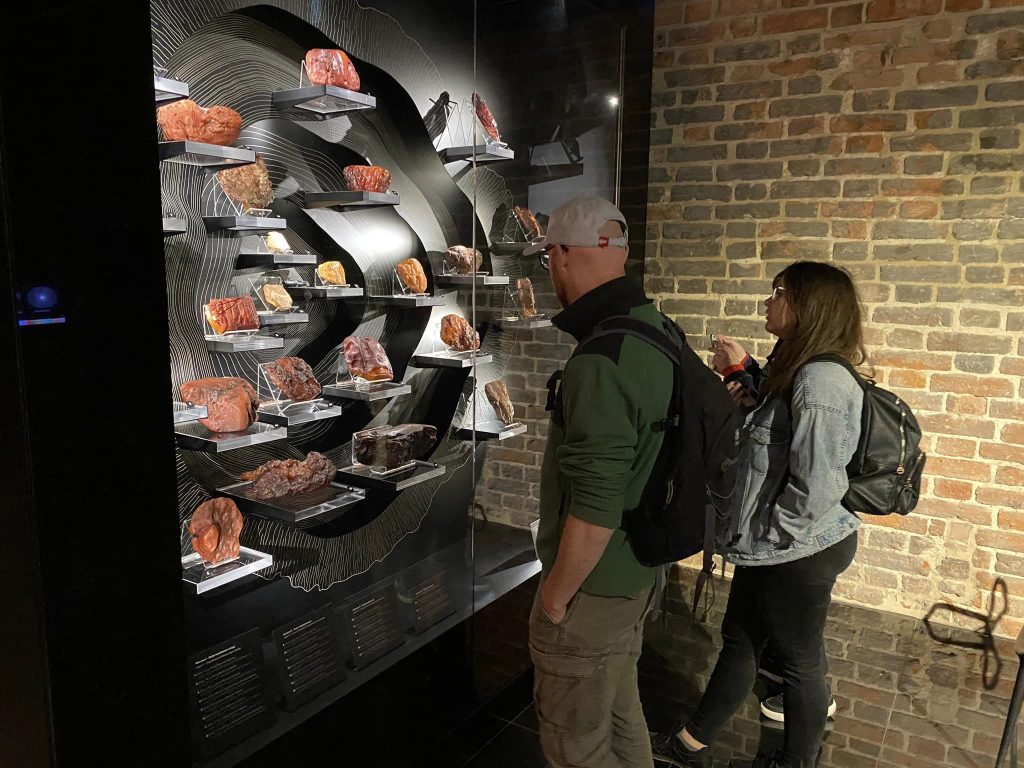
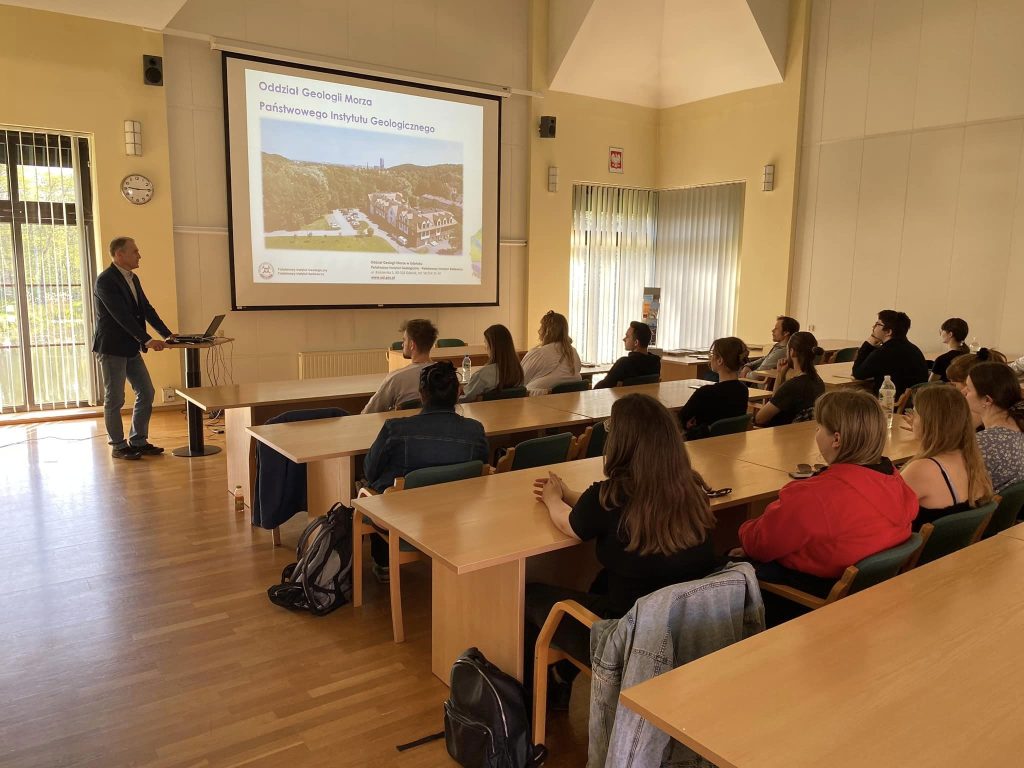
The fourth day of workshop was organized in the vicinity of the Puck Bay and the Hel Peninsula. Geologically, this area is extremely interesting and promising. What did we see? We visited a drilling site owned by KGHM Polska Miedź S.A. near Puck, which is used by the company to explore potassium-magnesium salts deposits in the Pomeranian region. In recent years, prices of potassium fertilizers have risen, making the acquisition of new sources of this resource a necessity. In the Pomeranian region, these salt deposits are based on polyhalite, a K-Mg sulfate. During our visit to the drilling site, we discussed deposit conditions and drilling techniques. The next part of the program took place at the very tip of Poland, on the Hel Peninsula, where we had a lecture on beach sedimentation. This sedimentation process allows for the formation of accumulations of clastic rocks and sands, which under favorable conditions can eventually transform into sandstones over geological time. To demonstrate the mechanisms of beach formation, our instructor, Dr. Artur Sobczyk, also dug a small pit that we named Hel IG-1. Along the way, we also discussed Hel itself, where Holocene sediments overlie Cretaceous substrates and can reach up to 100 meters in thickness.
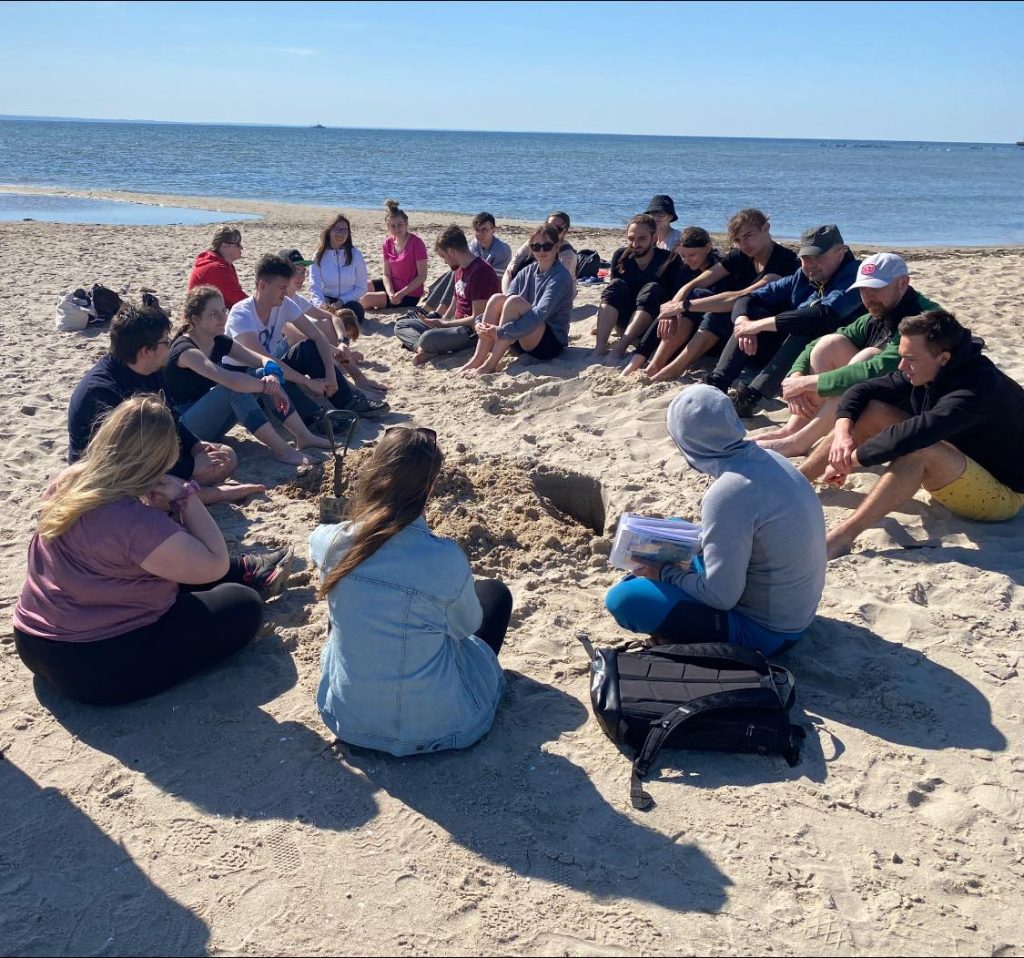
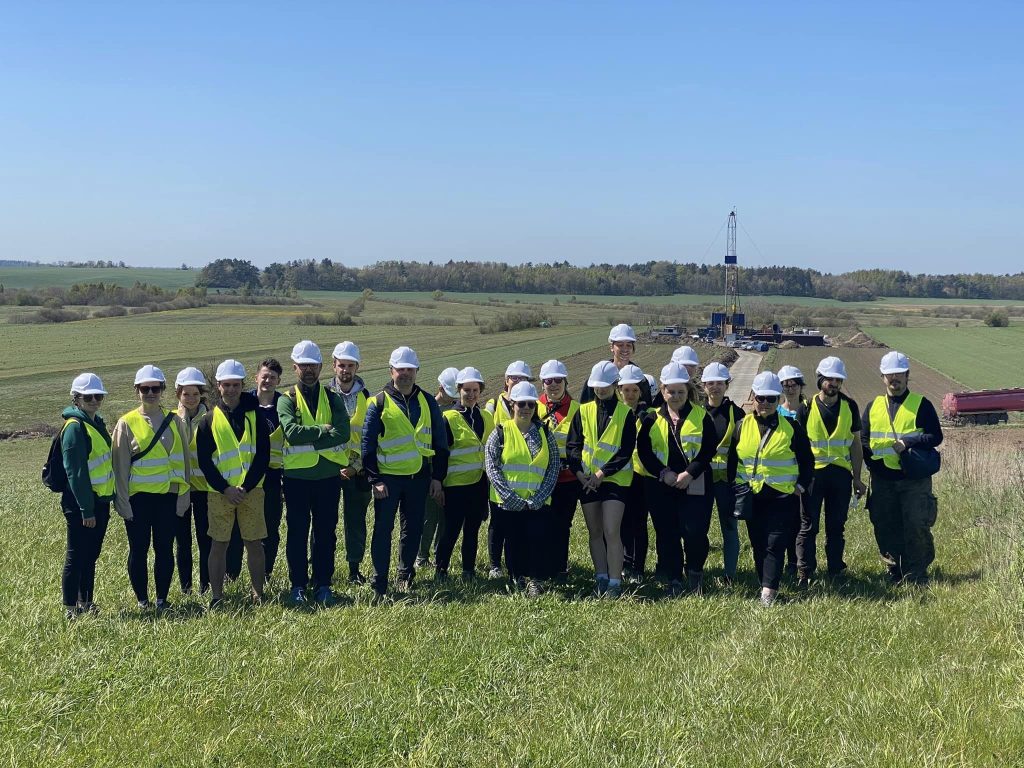
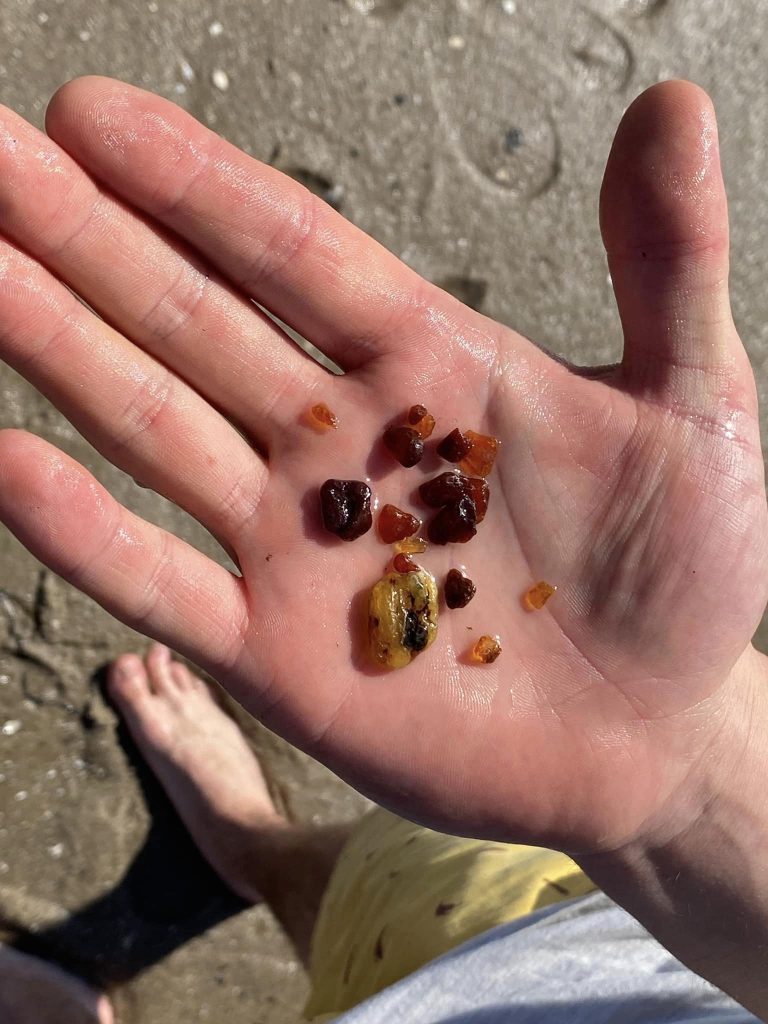
During the workshop’s fifth day, we had the opportunity to explore the Orłowo Cliff. Aside from being a picturesque emblem of Gdynia and the Tricity, it also serves as an exceptional geological exposure that regrettably faces rapid erosion due to abrasion. The cliff unveils glacial-origin clays and sands, adorned with numerous, frequently substantial erratic boulders of diverse rock types that were transported here by glaciers. Yet, for geologists, the cliff unveils a chance to witness the variety of glacitectonic processes manifested in the exposure. The most remarkable features are the folds, the genesis of which was elucidated by Dr. Artur Sobczyk from our Department of Structural Geology and Geological Cartography. The lecture also facilitated a discussion on the subject of Scandinavia’s isostatic elevation, contributing to heightened Baltic Sea pressure along the Polish coastline and even seismic activity in the northern regions of our country.
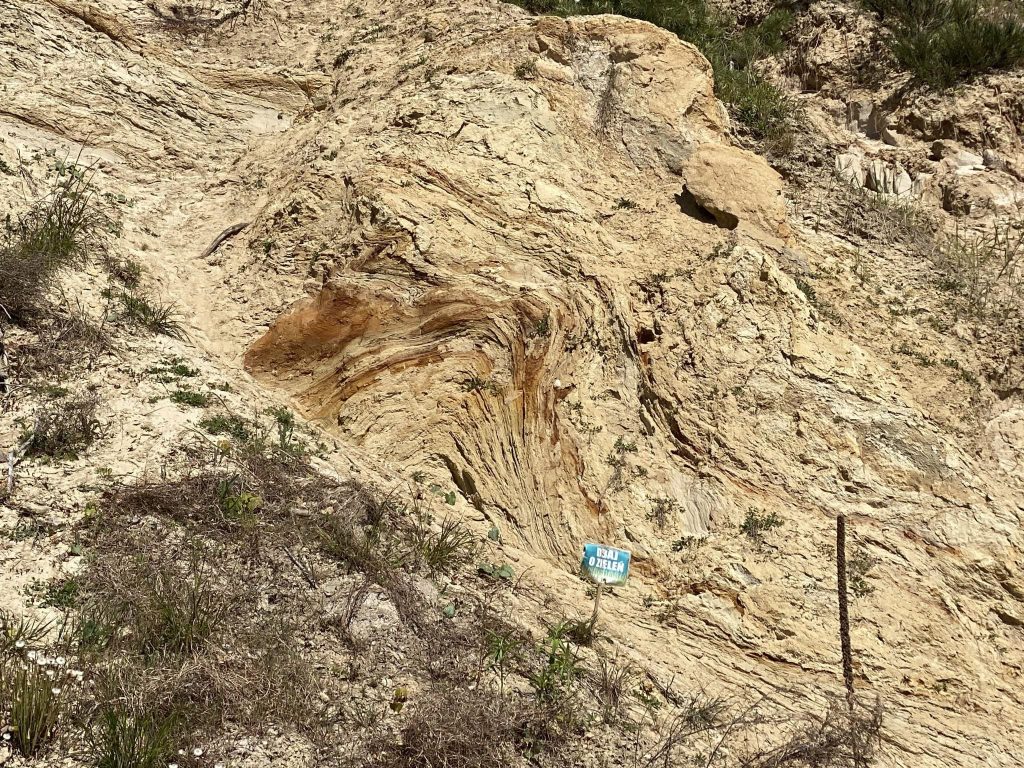
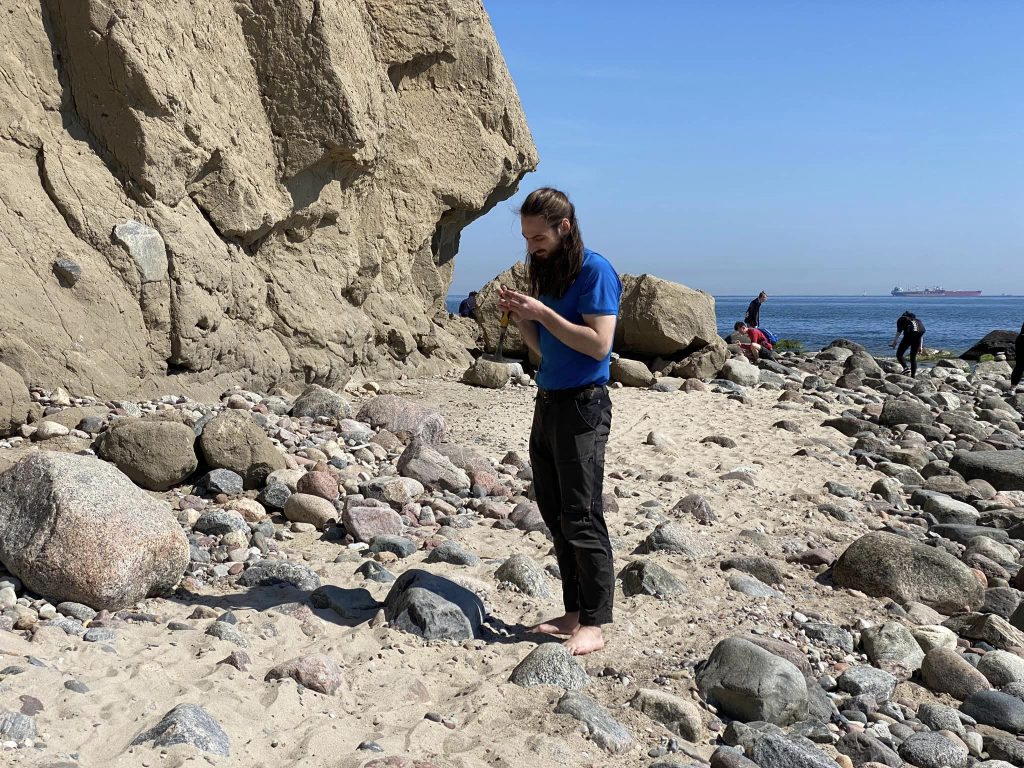
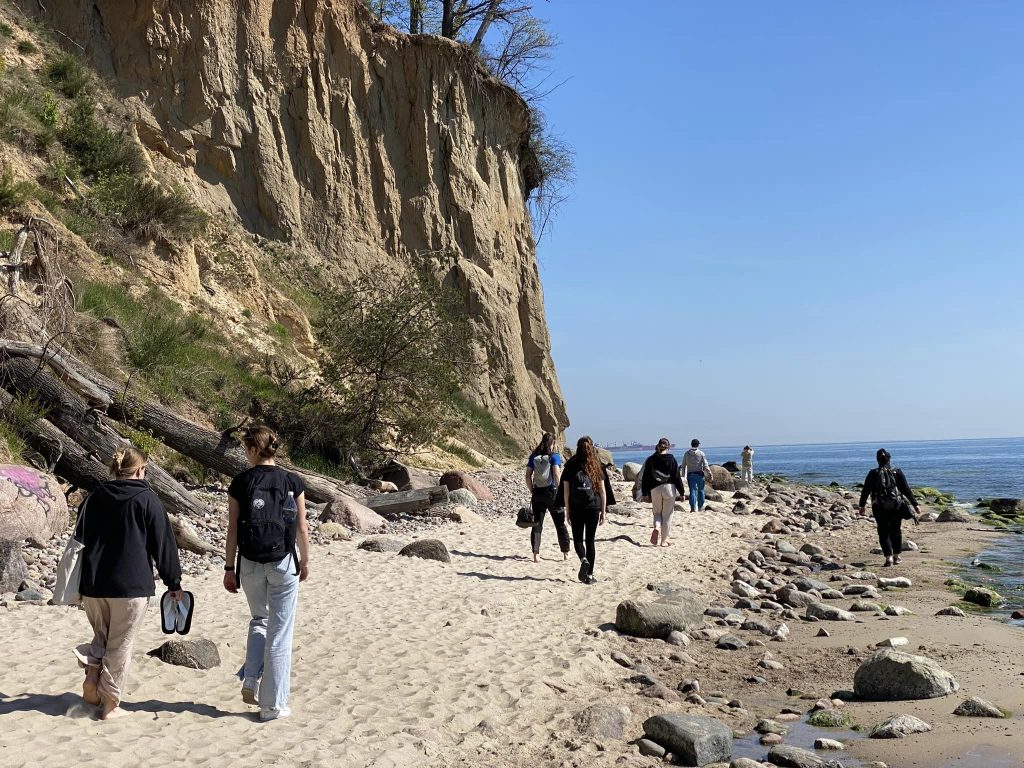
The sessions were led by Dr. habil. Sebastian Buczyński, Dr. Grzegorz Lis, Dr. Magdalena Modelska, Dr. Artur Sobczyk, and Dr. Piotr Wojtulek. This involved the participation of 20 students pursuing studies in geology, geological engineering, and geography.
